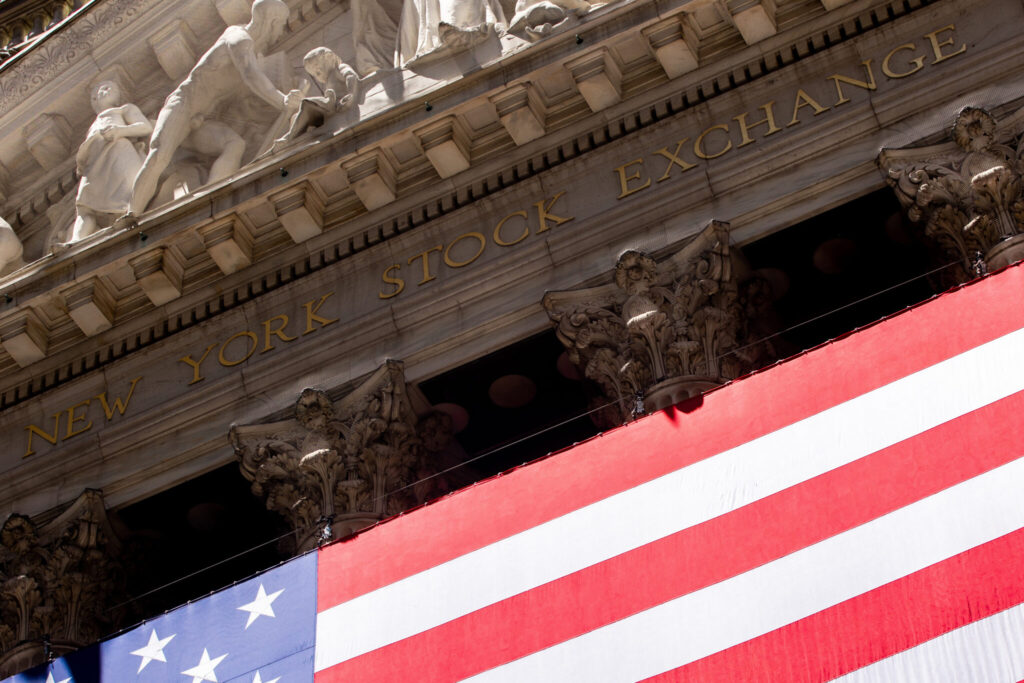Following the significant rebound seen last Friday, stocks are seeing continued strength in morning trading on Monday. The major averages have all moved to the upside, with the tech-heavy Nasdaq leading the way higher. In recent trading, the major averages have reached new highs for the session. the Associated Press has the story:
Wall Street drifts as earning data season ramps up
Newslooks- NEW YORK (AP)
Wall Street is ticking higher on Monday, as stocks drift upward following weeks of back-and-forth trading driven by hopes for cooling inflation and worries about the economy.
The S&P 500 was 0.5% higher after flitting between small gains and losses, roughly in the same place as two months ago. The Dow Jones Industrial Average was up 81 points, or 0.2%, at 33,456, as of 10:08 a.m. Eastern time, and the Nasdaq composite was 0.9% higher.
Markets have been churning for weeks with sharp swings in both directions. On one hand, they’ve benefited from hopes that the nation’s high inflation will continue to cool and get the Federal Reserve to loosen up on its blizzard of hikes to interest rates. On the opposite end, they’ve taken hits on worries about a possible recession because of rate hikes already pushed through by the Fed.
More recently, concerns have been rising about the strength of profits at companies because of the slowing economy and higher expenses. That’s key because profits are one of the main levers that set stock prices.
Baker Hughes, which provides services and equipment at oil fields, was swinging between a small loss and a gain after reporting weaker profit and revenue for its latest quarter than expected. It was recently up 0.9% as analysts pointed to strong orders and some other encouraging signals in the report.
Synchrony Financial also moved between gains and losses following its earnings report. It was recently down 2.1% after its results topped Wall Street’s expectations.
This upcoming week will see more than seven dozen companies in the S&P 500 report their results for the last three months of 2022. Headliners include Microsoft on Tuesday and Tesla on Wednesday.
Such big tech-oriented companies have already been announcing layoffs to cut expenses after acknowledging they misread the boom coming out of the pandemic and grew too quickly. Spotify was the latest to join the list, saying Monday that it will cut 6% of its workforce.
Big Tech stocks carry particular weight on Wall Street because they’re some of the market’s most valuable. That means movements for their stock prices hold bigger sway over the S&P 500 and other indexes than smaller stocks.
After soaring through the pandemic thanks to super-low interest rates and a surge in demand from suddenly homebound customers, they’ve been struggling over the last year as the Fed has been furiously raising rates.
For now, with inflation on the downswing since the summer, markets have grown nearly convinced the Federal Reserve will further downshift the size of its next rate hike, down to 0.25 percentage points next week. That would follow a 0.50 point increase and four straight hikes of 0.75 points.
The bigger question is how much further the Fed goes from there, and how long it will wait before it cuts interest rates. Such cuts can act like steroids for markets, and Wall Street is hoping they could arrive in the back half of this year. But the Fed has been adamant that it plans on holding rates high for a while, at least until 2024.
The yield on the two-year Treasury, which tends to track expectations for Fed movement, rose to 4.22% from 4.18% late Friday. The 10-year yield, which helps set rates for mortgages and other important loans, rose to 3.52% from 3.48%.
Also adding pressure on markets is another partisan battle in Washington about the nation’s ability to borrow. Wall Street has seen this argument many times already, but if the two parties can’t agree to allow the U.S. government to borrow more, economists say it could create chaos in markets and cause a recession on its own.
Crunch time appears to be in the summer, but each day that it grows closer increases the risk.
In Asian markets, Tokyo’s Nikkei 225 added 1.3% despite Japan’s finance minister saying the country faces an “unprecedentedly severe” financial situation after spending heavily to counter the pandemic and other troubles.
Several other markets in Asia were closed for the Lunar New Year holiday. In Europe, stock indexes were mixed and making only modest moves.







